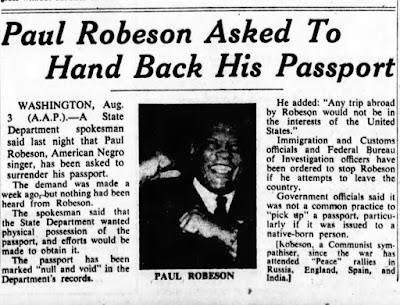October 18, 1933 The night could only be described as a berserk frenzy. Two thousand people gathered to, “save the state $1,000, we did this for 75 cents.”
Two days before a 71-year-old woman named Mary Denston was assaulted on her way home from the post office in Princess Anne, Maryland. When she reported the assault to the police she identified a known local man named George Armwood. Armwood was well known by locals for being a very hard worker but also as “feeble-minded”; today we recognize this as an intellectual disability. Black newspapers at the time were already reporting on how whites were taking advantage of individuals such as Armwood by working them incredible hours at starvation wages.
The police put together a search party which wasn’t a good idea as those involved were already spreading misinformation and becoming angry. After a search of a few hours, they found Armwood hiding in the cellar of a white friend. The arresting officers were reported by Armwood’s friends and mother of nearly beating him to death.
Because of the growing community anger and the national bad press of the last reported Maryland lynching in 1931; after the arrest police took him to Salisbury 10 miles north, and then Cecil County, and finally Baltimore City. Despite the police concern over the obvious growing tension in Princess Anne, Somerset County Judge Robert F. Duer and, State Attorney John Robins felt it more important to respond to their local constituents and requested Armwood’s return to the city. The two men had discussed the concerns over violence with the Governor and had made promises that no mobs were forming. Governor Albert C. Ritchie then assented and ordered the transport of Armwood back to Princess Anne and he was returned on the morning of Oct. 17.
All through the day white residents began to gather in the square near the courthouse & jail. Police tried to disperse the crowd and Judge Duer spoke to them asking them to make an oath of honor not to lynch Armwood. The crowd didn’t so Deputy Norman Dryden ordered tear gas to be fired into the crowd, the crowd responded by attacking the police and found two timbers to use as battering rams. They injured the deputy and state police Captain Edward McKim Johnson in the process of breaking into the jail and forced Dryden into giving them the keys.
Armwood tried to hide under his mattress but the mob grabbed him and pulled him out of the cell. Before he was even taken from jail his ear was cut off and he was stabbed and beaten. A noose was put around his neck and he was dragged by a truck to a nearby tree and hung. The violence that was being done to Armwood probably killed him before he was even pulled into the tree.
This did not satisfy the bloodlust of the mob and they pulled Armwood down and drug the body back to the courthouse where they hung it from a telephone pole and set it afire. After burning the body the mob pulled it down and threw it in the back of a local lumberyard for the police to gather up.
Governor Ritchie blamed Judge Duer and State Attorney Robins and ordered an investigation. The was even pressure from the Department of Justice. A grand jury heard testimony from 42 witnesses to the Armwood lynching, including twelve black men who were held in the jail and had heard, and seen, Armwood dragged to his death. All white witnesses claimed they weren’t involved and that it had to be strangers from out of town. Mobs warned prosecutors and investigators to get out of town. State police did identify nine men who led the mob to action but the grand jury refused to issue any indictments. Maryland Attorney General Preston Lane also ordered the National Guard to Salisbury and arrest suspected lynchers. This led to clashes between residents of both Princess Anne and Salisbury and the National Guard. Crowds started gathering and chanting, “Lynch Lane” which led to Lane leaving town and dismissing the guard.
After two years of investigations and arrests everyone charged had their cases dismissed. No one was ever penalized for the brutal death of George Armwood. Rather the consequences were for both Governor Ritchie and Judge Duer whose political careers were ended.
Armwood’s body was buried in a Potter’s Field and the location is now unknown. His murder was the last lynching in Maryland, however racial animus continued to exist for decades and white residents continued to argue that, “lynching is a civic duty when the machine of justice is too slow,” and that “lynching is the best perhaps only deterrent to rape.”
Sources:
https://msa.maryland.gov/megafile/msa/speccol/sc3500/sc3520/013700/013750/html/13750bio.html
https://boundarystones.weta.org/2022/03/01/lynching-george-armwood
















